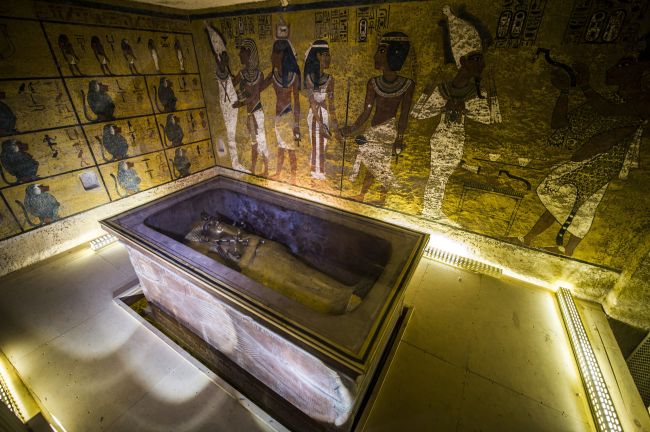
Archaeologists have been scanning the tomb of King Tutankhamun, in Egypt’s Valley of the Kings, using infrared and radar technology. They’ve found a wall that is a different temperature than other parts of the room, which may indicate a sealed-off chamber that has yet to be discovered. The scans of the 3,300-year-old tomb have been sent to Japan for analysis and results won’t be in for another month. But they are 90 percent sure that the temperature difference is a hidden room.
Tutankhamun was the child Pharaoh that may or may not have succeeded his father, Akhenaten. His burial chamber was discovered in 1922 and has been made famous for the number of antiquities contained within, despite grave robberies and desecration that was rampant in the Valley of the Kings. Whether or not he directly followed his father as ruler is unclear, as many Egyptologists believe there was a brief reign of his stepmother, Queen Nefertiti. To this day Nefertiti’s mummy has never been found, and the possible discovery of her final resting place would reveal what exactly happened during the 18th dynasty of Egypt.
British archaeologist Nicholas Reeves spurred the search, as he holds a theory that Tut’s tomb is actually just a “corridor tomb,” or a pass-through chamber to a bigger and more decorated burial chamber.
“Clearly it does look from the radar evidence as if the tomb continues, as I have predicted,” he said. “I think it is Nefertiti and all the evidence points in that direction.”
There are other possibilities for what could be in the secret chamber, possibly another wife of Akhenaten. One of the most notable detractors to the theory that it is Nefertiti buried with her stepson is Egypt’s former antiquities minister Zahi Hawass. He insists that Nefertiti and Akhenaten’s converting to a monotheistic society with the sole worship of the sun god Aton means that priests of the day would have never let her be buried in the Valley of the Kings.
The next step, if the scans reveal it really is an unopened room, is to figure out how to open it without damaging anything inside.
(via AFP)






